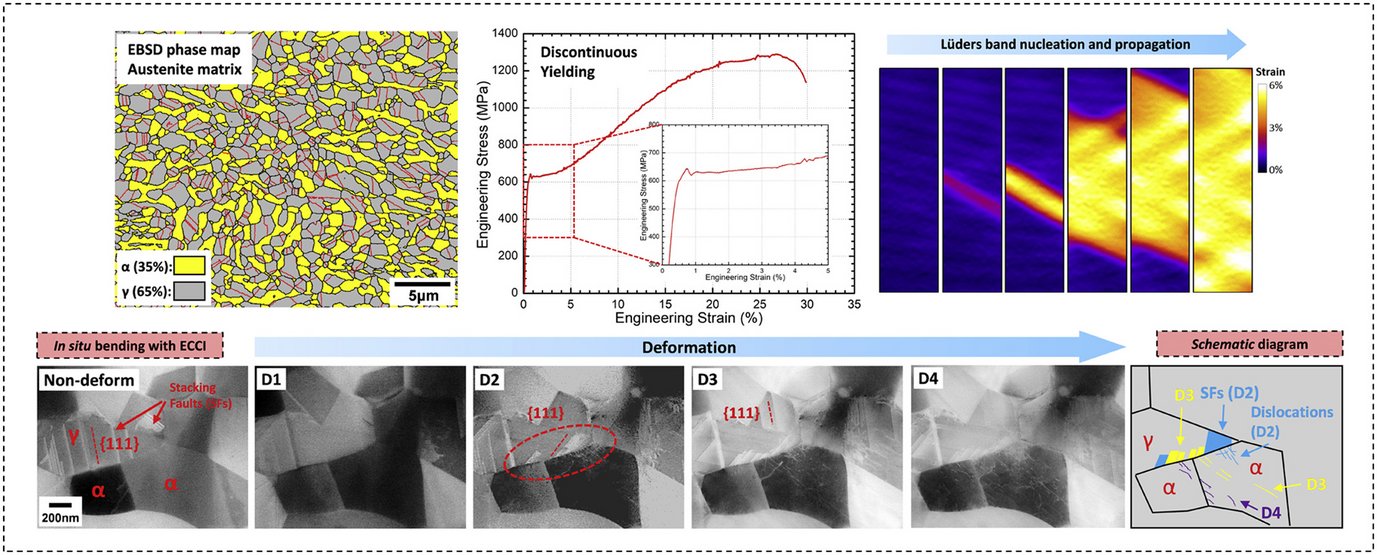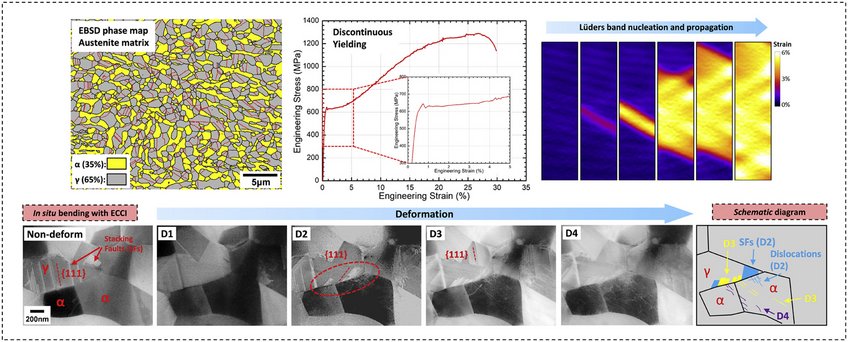Macroscopic to nanoscopic in situ investigation on yielding mechanisms in ultrafine grained medium Mn steels
A discontinuous yielding phenomenon can often be found in ultrafine austenite-ferrite duplex medium Mn steels. This phenomenon is not commonly is not often seen and the dislocation-based mechanisms are not understood. The investigation of multiple in situ characterization techniques, from a few millimetres down to under 100nm, show that both austenite and ferrite are plastically deformed before the macroscopic yield point. The plastic deformation starts in the austenite phase before ferrite yields. The austenite-ferrite interfaces are the preferable nucleation sites for new partial dislocations in austenite and for full dislocations in ferrite. Because of the submicron grain size, a high density of dislocation sources is provided by the large total interface area. This leads to a rapid increase of mobile dislocations, which is believed to be the major reason accounting for discontinuous yielding in such steels. The Lüders banding behavior and the local deformation-induced martensite forming inside the Lüders bands are studied simultaneously. We find that two important microstructural factors control the Lüders band characteristics in terms of the number of band nucleation sites and their propagation velocity, the grain size and the austenite stability against deformation-driven martensite formation. These factors determine the early yielding stages of medium Mn steels because of their decisive influence on mobile dislocation generations and local work hardening.

